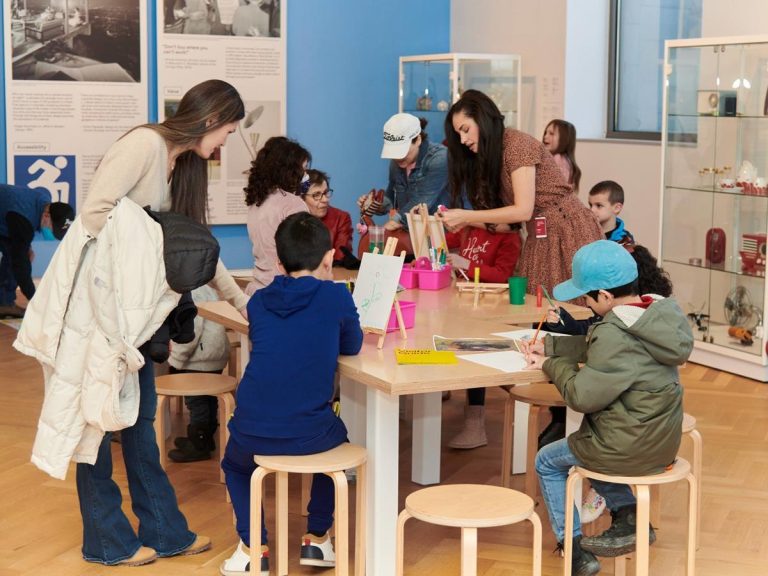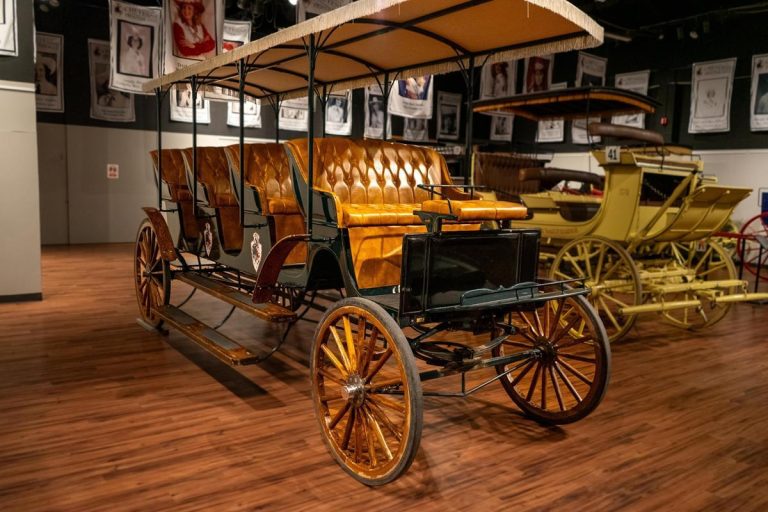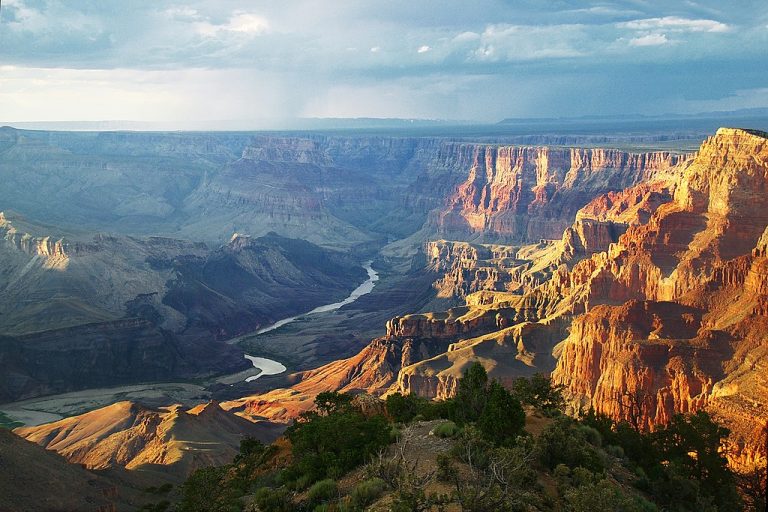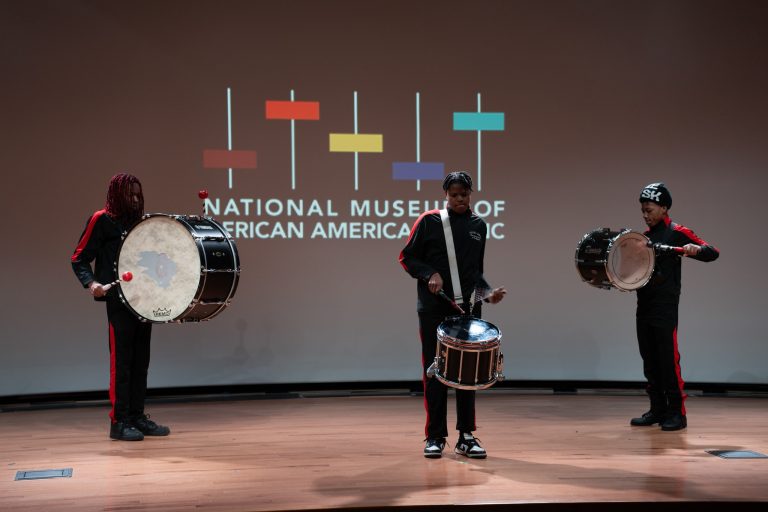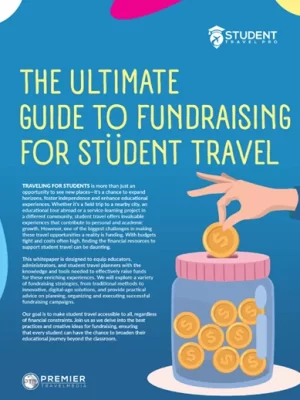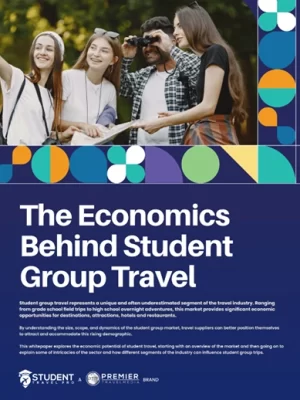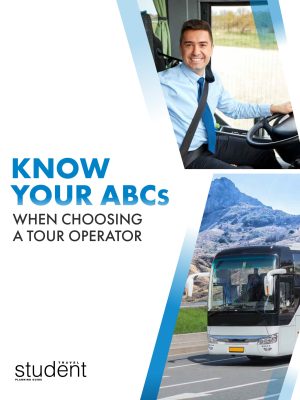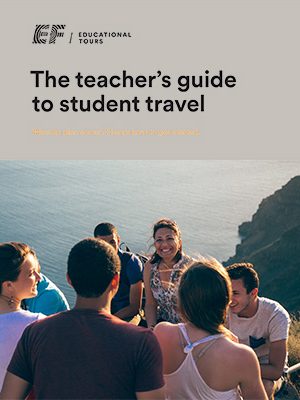While travel restrictions have now thankfully eased and in-person field trips are back, we’ve come to realize the power of virtual field trips and just how enriching they can be for today’s students. They are a convenient, cost-effective way to explore our country and learn about different cultures, environments, and historical events.
The opportunities are endless and offer educators a chance to get creative when it comes to planning a virtual field trip. And best of all, virtual field trips are available for nearly every subject matter area you can think of, making these great add-ons to any curriculum.
Below we’ve compiled a list of some of the best virtual field trips in the United States, broken down by geographical region.
Virtual Field Trips in the Southwest
Arizona
The Musical Instrument Museum, in Phoenix offers a Virtual Education Program that allows students and teachers to discover a world of music! This immersive and interdisciplinary program promotes critical thinking and invites students to explore fun, meaningful, and standards-based activities. Three distinct video collections provide a dynamic and innovative experience for students in grades K-12 to discover culture, history, and how musical instruments are made and work. Sample collections include the “Virtual Discovery Tour” for grades 3-12, in which students embark on various musical journeys and experience community music making. Or the “Virtual STEM Tour” for grades K-8, where connections between music and science are revealed as students discover how musical instruments are made and how they work.
Arizona State University is offering the opportunity for students to virtually explore one of the greatest wonders of the world, The Grand Canyon. Students will able to discover the 200-mile Colorado River that cuts through the canyon, watch videos from scientists in the field and even explore remote areas that are not easily accessible in person. This is perfect for students who are currently studying geology and rocks, as they will learn about topics like rock layering, erosion and formation. This virtual field trip includes images and videos from scientists who were in the midst of exploring the canyon themselves.

Credit: Arizona State University – Virtual Field Trip
New Mexico
The Santa Fe Children’s Museums in New Mexico has created a couple of new virtual field trips that every student can enjoy. Students can learn about a variety of different STEM topics through these interactive and educational programs. Students can even livestream with a museum worker that includes a Q&A session. There are two programs for 3-8 graders, “Physical Science: Earth and Planetary Science” and “Life Science: Biology and Ecosystems Science.” Both virtual field trips are slightly altered and up to 20-60 minutes depending on what grade is participating.
Texas
For students who love animals, The Houston Zoo in Texas has new webcams that are the perfect virtual field trip. These live videos allow students to examine a variety of different animals and explore the different exhibits they reside in. Some of the webcams include “The Gorilla Habitat Cam,” Elephant Yard Cam” and even a camera small enough for students to enjoy leafcutter ants.
If live webcams just aren’t enough, teachers can let the Houston Zoo come to their classroom through the zoo’s program “Zoo Mobile.” This program is a group of zoo workers and educators who travel to different schools around the area to give students the opportunity to see animals in real life. While getting a closer look than through the barriers of an exhibit, students will learn about the animals and even get to touch some of them. The zoo educators will also teach kids how to help animals in the wild and live harmoniously with them.

Credit: Houston Zoo
Any hopeful NASA employees or those just curious about the wonders of space will love this interactive virtual field trip of the Johnson Space Center in Houston. Boeing and Discovery Education have partnered up to provide students will a virtual tour of the station that explains the behind-the-scenes of building spacecraft and what it takes to produce massive launches. Students will learn about the history of the space station, past projects and even explore an old spacecraft: the Starliner/CST-100. The virtual field trip is divided up into six different chapters that students can work through at their own pace.
Oklahoma
At the Will Rogers Memorial Museum students will get to know one of America’s most famous entertainers through a famed Will Rogers interpreter. The interpreter will discuss the importance of Will Rogers life, his character and the overall impact it had on American history. During his program he uses rope tricks, Will’s wise cracks and personalizes each program by interacting with his audience. It’s educational and entertaining from start to finish! Program lasts 25-30 min, broadcast live from the museum’s theater. Students will be able to ask questions and interact live with the Will Rogers interpreter.
The Oklahoma Nature Conservatory in Oklahoma City has teamed with Bank of America to create “OK360.” This new program allows people to explore the most remote places of the conservatory’s land with their high-tech 360-degree cameras. Students are able to see everything for spanning views of the fields to investigating single plant species or animal habitats. “OK360” teaches students ecology, the environment and the importance of keystone species through their online learning tools. Places students can explore include the Tallgrass Prairie Preserve, the Four Canyon Preserve and the Blue River. The conservatory even has information on endangered species and protected lands on their website.
Virtual Field Trips in the Southeast
Alabama
For a taste of the outdoors, head to Alabama’s farmland through a virtual field trip with the Alabama Farmers Federation. Watch the entire virtual field trip video series to learn all about bees, tree nurseries, growing vegetables and more. Each presentation is given by a member of the farmers federation, and educational activities are placed in the comments section for kids to engage with during the video. Check out all eight videos on the Alabama Farmers Federation website to learn all about a day in the life of a farmer.

Credit: Alabama Farmers Federation
Florida
Turn the sprawling 1.5 million acres of wetland into an e-adventure by participating in one of the Everglades National Park’s virtual field trips. With interactive games and classroom activities, students can learn about topics such as invasive species and conservation sciences. With a lush ecosystem and hundreds of animal species to explore, students will love touring the best of Florida’s Everglades from home.
Georgia
Let ocean life come to you through at-home learning with the Georgia Aquarium, located in Atlanta. Enjoy over 23 deep sea learning videos presented by marine biologists, complete with corresponding study guides suitable for students of all ages. Virtually dive into the deep blue and learn about jellyfish, beluga whales and more with the Georgia Aquarium.
Kentucky
Whether you’re an equestrian, history lover, teacher or student, you’re bound to be amazed by Louisville’s Kentucky Derby Museum. The museum is offering a free virtual field trip for students to learn about the history and cultural significance of horse racing. Trot to the Kentucky Derby Museum’s website for a virtual museum tour, mini-lessons, racetrack tour and more.
Louisiana
For students and lovers of jazz alike, check out New Orleans & Company’s virtual tour of Preservation Hall. Situated in the heart of the French Quarter, this historic venue is a must-see for performing arts students. Look around at the small space that once hosted some of the world’s top jazz musicians, and learn all about the significance of jazz in the Bayou State. For more virtual tours of sites around the city, check out the New Orleans & Company website.

Credit: New Orleans & Company
North Carolina
Bentonville Battlefield is the site of the 1865 Battle of Bentonville, the largest Civil War battle fought in North Carolina. Students can tour the grounds, watch artillery demonstrations and learn all about the Bentonville Battlefield’s history on North Carolina Historic Sites’ YouTube Page. For more about North Carolina’s heritage, check out their website for additional e-tours.
Arkansas
Take a trip to Arkansas’ Bathhouse Row with a virtual tour of the historic Fordyce Bathhouse. Part of the National Park system, this bathhouse was established in 1915 by Sam Fordyce and remained in operation until 1962. Today, visitors can gawk at the stunning architecture of the three-story home while learning about the state’s cultural heritage.

Credit: NPS
Tennessee
A virtual tour of Nashville’s Country Music Hall of Fame is sure to bring music to your students’ ears. For exclusive interviews, songwriter sessions, livestreams and other special programs, head to the video archive. You can also explore their digital archive, featuring a photography collection, sound recordings and more. This musical experience is bound to wow your students, so virtually head to the Country Music Hall of Fame for a sneak peek into the world of country.
Virtual Field Trips in the Midwest
Ohio
The Pro Football Hall of Fame offers award-winning virtual field trip programs that use technology to allow students from across the globe to connect with the Hall of Fame to learn more about pro football’s rich history. Like the Pro Football Hall of Fame’s field trips, these programs are aligned with Common Core/National Standards of Education. The Hall of Fame’s virtual field trip program has received international recognition as a Pinnacle Award winner through the Center for Interactive Learning and Collaboration (CILC).
The virtual field trips at the Ernest Warther Museum & Gardens take students through the museum, bringing to life the works of World Master Carver, Ernest “Mooney” Warther. The museum is staffed with many former educators which helps focus students, even in a virtual setting. The tour can take many focuses, from art to engineering and history! Discussions, pre and post activities, and other student involvement can be implemented and will be focused based upon grade level.
The National Museum of The Unites States Air Force in Riverside has created a new virtual tour with a 360-degree camera that allows students to enjoy all angles of the museum from their classroom. The self-guided tour included the entire museum and will take your students from gallery to gallery, teaching them the history of the Air Force and major battles and inventions of the past. The tour has arrows that guide them and pinpoints that when pressed will give videos or paragraphs of more information. There are even links that can send you to other educational resources. For those interested in the aircrafts, “COCKPIT360” has a gallery of the interiors and exteriors.

Credit: National Museum of the U.S. Air Force
Indiana
The Indianapolis Zoo in Indiana is offering a new live video chat program via Google Hangout. Students will have the opportunity to learn about a specific topic form a “zoo educator” and then have a Q&A session at the end of the video chat. Topics include habitats, adaptation, zoo careers, Indiana wildlife, rain forests and penguins. Each session is $50 for 30 minutes and a maxim class size of 35 students. Teachers can customize a session to fit their curriculum with the zoo workers for $75.
Illinois
For those interested in aquatic life and marine biology, the Shedd Aquarium in Chicago is offering a variety of virtual field trips for kids grades K-8. Let your students explore the behind the scenes of the aquarium and go into the habitats all from the classroom. Students will be able to interact with aquarium workers and talk with experts and professionals in the field. “Sharks at Shedd” allows students to discover how sharks are identified and feed and even be able to explore the wild reef habitat they live in. Other programs, all 50 minutes long, focus on penguins, turtles and the other animals and habitats of the aquarium.
Although students cannot weave down wide silent hallways to experience different periods and expressions of art in person, the Art Institute of Chicago has created an online space where virtually viewing art is still possible. Although much of the pleasure comes from viewing art in person, AIC has put its vast collection of paintings, sculptures and photographs online for students to enjoy. Your kids can explore different collections like the infamous painter El Greco or scroll through the AIC blog, which has behind-the-scenes articles written by curators and staff. There are even interactive features where people can hear stories about different artworks and the timelines from their creation to preservation.

Credit: Art Institute of Chicago
Michigan
For the history buffs, Mackinac State Historic Parks in Mackinac Island has created many virtual programs that allow students to explore and learn about the rich history of the Straits of Mackinac. Students can enjoy online exhibits, videos, readings and other educational materials. There are virtual tours of historic sites like “Fort Mackinac” and “Mackinac Point Lighthouse,” and students can learn about previous battles that happened on the grounds. They even offer movies and a blog that offer more insight into the history of the state parks.
Missouri
Due to a statewide shutdown of historical sites and museums, The Missouri Historical Society has put together an online program called “History at Home” for families and kids who are still looking to learn about Missouri’s vast past. There is even a virtual field trip for students called “Panoramas of the City,” which is an online exhibit that presents St. Louis in the past through a series of photographs. Students will get the opportunity to immerse themselves in the gallery to discover what St. Louis and how it has changed. They will learn about the people and places of the past and can compare what they find to the present-day city.

Credit: Missouri History Museum
Additionally, the Missouri History Museum in St. Louis has placed all their exhibits and extensive libraries online for public accesses. Your students will be able to filter through current and previous exhibits that include pictures, passages and videos about Missouri’s past and the prominent people who made the state—and city of St. Louis—what it is today. Exhibits include “Mighty Mississippi,” which follows the history of the infamous river, and “Seeking St. Louis,” which maps out how the city came to be.
Wisconsin
Learn about the history of Harley-Davidson from the early days of the company all the way through the present with a virtual tour of the Harley-Davidson Museum. Highlights include: the beginning, changes of the 1920s and 1930s, relationship with the military, and more!
WiscoVR, created by the Wisconsin Department of Public Instruction is a new cutting-edge program that brings a new meaning to what field trips are. By using virtual reality goggles through programs like Google Cardboard, students are able to explore different places across Wisconsin without having to be there in person. Students can go virtual to places like Habelman Brothers Company in Tomah, the largest fresh cranberry farm in the world, to learn about how the fruit is grown and produced. If your students are looking for something more history-based, they can explore Heritage Hills State Park in Green Bay. Each virtual field trip included 360-degree videos, audio recordings, and written texts.

Credit: WiscoVR
Minnesota
Dive into the rich and interesting history of SPAM with a free live virtual tour of the SPAM(R) Museum via Zoom, available by appointment. Learn the history of Hormel Foods and the SPAM(R) brand and how the company started in Austin, MN in 1891.
Students can now explore and discover the Mississippi National River and Recreational Area, a 72-mile stretch along the Mississippi River that encompasses 54,000 acres of protected land, from the classroom. Take virtual tours and watch 360-degree panorama videos of the Mississippi Corridor and learn about nature and the species which reside there. This technology is the closest thing your students will have to an in-person interaction with the environment. Using Goole Earth, students can explore Mill Ruins Park, St. Anthony Falls and Coon Rapids Dam. For more information, students can listen to the “Ranger on Call” audio tours which have interesting stories and facts on the park and river.
Iowa
Blank Park Zoo in Des Moines has created new virtual programs that allow kids of all ages to enjoy the zoo from home or the classroom. Teachers can have their students experience a live tour of the zoo with a Blank Park educator. Students will hear fun and interesting stories from the educator while learning about the animals and their exhibits. The zoo also offers sessions where students can chat with workers about one of the animals from the zoo. If students are looking to see the animal there are pre-recorded, and sometimes live, videos where kids can meet animals like alligators, giants rabbits, birds and more.
Virtual Field Trips on the West Coast
Kansas
Thanks to the Kansas Pork Association, students can take a virtual trip to a pig farm in Kansas. The association allows people to go through a pig barn, talk to pig farmers in real-time and see and learn about pigs. They also provide teachers with lesson plans that encourage students to learn about agriculture and farming.
Nebraska
The Durham Museum in Omaha aims to educate its visitors about the history of the Omaha region. The museum has over 45 virtual field trips covering various topics such as pioneer life, Native American life and Lewis & Clark. They also include many “Featuring” videos that discuss the city and state’s history.

Credit: Durham Museum
The University of Nebraska State Museum in Lincoln is known for teaching students about zoology, botany, anthropology and geology. They have recently adapted their teaching method to include different online experiences for students. They have different live virtual field trips every Tuesday as well as online activities, coloring pages and videos from their Mueller Planetarium.
California
The Monterey Bay Aquarium in California strives to teach students about ocean and animal conservation. In order to reach a larger audience, the aquarium started showing live cams of their most popular attractions. This includes their jellyfish exhibits, otter exhibits, penguin exhibits and more. Additionally, they have set feeding times, so students can get an up-close look at the animal feeding.
The J Paul Getty Museum in Los Angeles houses stunning works of art dating back to the eighth century. The architecture, modeled after a first-century Roman house, is a perfect setting to view the paintings, sculptures, manuscripts and other art. Students are now able to see some of the most beautiful art in Los Angeles from their own homes.

Credit: Google Arts & Culture
The San Diego Zoo in California holds 3,500 animals that range through over 650 species. In order to help animal enthusiasts and students alike, the zoo has started providing live cam footage for some of their most beloved animals. This includes their hippos, polar bears, penguins, tigers, elephants and even their prerecorded footage of their rare pandas.
Wyoming
Yellowstone National Park was the first established national park in the United States. There is so much history to the land, and so much to see. Students are now able to visit the national park from their classrooms. The website has videos, map-based tours and a full virtual tour of the upper basin of the park.

Credit: NPS
Washington
Did you ever think you could show band or orchestra students a symphony performance without leaving the classroom? Now you can! The Seattle Symphony is posting concert rebroadcasts nearly daily on their website and YouTube channel, with additional “Family Programming” broadcasts featuring specific instruments.
The Museum of Flight in Seattle is the largest independent non-profit air museum in the world. With the museum holding over 175 aircrafts, they offer stunning one-of-a-kind virtual aircraft tours. They are offering students 360 panoramic tours of 12 aircrafts.

Credit: Museum of Flight
Oregon
Oregon Agriculture is committed to educating students in Oregon and beyond. They’ve had e-learning resources and video libraries on their website, but they also recently added their virtual field trip experience. With this addition, they are hoping to educate more students on the importance of agriculture and farming in Oregon.
South Dakota
South Dakota is allowing students and history enthusiasts all over the world to take a trip to their most famous national monument: Mount Rushmore. They offer an introduction into the history of the monument, a 3D exploration, a virtual tour and more in-depth information into the creation of the monument.

Credit: CyArk
North Dakota
This Plains Art Museum in Fargo showcases about 12 art exhibits throughout the year, with special acknowledgment of women and Native American artwork. Through their online exhibits, students could immerse themselves in that realm and learn about things that could possibly never be learned elsewhere.
Montana
The Glacier National Park includes parts of two mountain ranges, over 130 named lakes and hundreds of species of animals. With their new interactive website, students are now able to learn about the geography, landscape and history of the land.
Utah
The Natural History Museum in Salt Lake City was created with the idea of educating people about the natural world and the mountain history of the land. Now with their virtual field trip program, they are able to spread that message even more. The museum now offers eight online lessons that feature scientists and educators to show people the history of the museum and of Utah.

Natural History Museum, Credit Visit Utah
Idaho
Idaho State University has taken its Antarctica adventures to the next level. They are allowing virtual tours into the history of the continent and the archaeology that’s featured at Destination Antarctica. They also explore the surrounding seas and examining the fossils that still reside there. Students from around the world are now able to take a look at this nearly uninhabitable continent.
Nevada
NASA is one of the leading educators in the STEM field. And what better way to educate students about engineering, technology and manufacturing than directly from the source? With NASA’s new virtual field trip program, students can get a real experience of what it’s like to work for one of the most famous government programs. Students can take a behind the scenes tour of the builders of spacecrafts and talk about ways to create a sustainable future.
Virtual Field Trips on the East Coast
New York
The Bronx Zoo and Aquarium is now showing live cams of their most popular animal exhibit. The Zoo has live cams of the sea lion exhibit, the Madagascar exhibit and the aquatic bird house exhibit. The Aquarium shows their sea otter exhibit and the shark exhibit. They even have specific live cams showing feeding times!
The Metropolitan Museum of Art is the largest art museum in the United States and houses over 20 online exhibits. Through their virtual field trips, students and art enthusiasts alike can learn about the complete history of the museum, look at famous fashion from throughout the centuries and learn about the art of music. They also offer 360° degree videos of their most famous art pieces.

Credit Metropolitan Museum of Art
The Corning Museum of Glass has been around since 1951, and is exclusively centered around glass. They are most famous for their narrated glass blowing demonstrations. They are now putting their special guest demonstrators and their best glass blowing techniques on their YouTube channel for students and anyone who is curious about the art of glass blowing.
Connecticut
Learn about the life and contributions of abolitionist and author of Uncle Tom’s Cabin at the Harriet Beecher Stowe Center, a museum, research library, and program center in Hartford. The Stowe Center’s mission is to preserve and interpret Stowe’s Hartford home and the center’s historic collections, promote vibrant discussion of her life and work, and inspire commitment to social justice and positive change. Programs teach students about critical pieces of history and the life of Harriet Beecher Stowe.
Mystic Seaport Museum’s virtual education programs make the museum come alive for students who are not able to visit in person. These programs are delivered via Zoom and other video conferencing software. Virtual programs always include an educator and a moderator to facilitate the discussion over the chat. The museum’s two signature programs, Life in a Seaport Town and Whaling, use a combination of behind-the-scenes pre-recorded footage and videos, up close and personal artifact analysis, and live footage from the vessels and exhibits on the museum grounds. These virtual programs allow students to experience never-before-seen footage that has not been incorporated into in-person programming in the past. To see all virtual program offerings please visit the Virtual Programs page.
Massachusetts
The Edward M. Kennedy Institute for the United States Senate offers a range of civics field trips covering a variety of topics including voting rights, immigration, environmental policy, and more. Programs are designed for grades K-12, including Welcoming Words for K-3, Future Senator for 3-5, Pathways for 4-8, Today’s Vote for 6-12, and Real Life Civics for 6-12. For more information on each program, visit the school programs page.
The Boston Tea Party Ships and Museum offers the true Boston Tea Party experience right from the harbor. But the best part is that students can get that experience from anywhere in the world. They offer an entirely virtual experience, with historical reenactors and a complete reenactment of the tea dumping. They also offer virtual tours of the Boston Massacre trial, women of the American Revolution, anecdotes from the Boston Tea Party, and adventures at the sea in the 18th-century.
The EcoTarium in Worcester aims to teach students about natural sciences through hands-on experiences. They offer three different virtual education programs. They offer the animal adaptations program that discusses the evolution and the biofacts of animals. They also have their understanding weather program which discusses the Earth’s systems and climate change. They also have their invisible forces program which discusses forces of motion and energy.
Pennsylvania
The Museum of the American Revolution in Philadelphia has only been around since 2017, it is already making strides in the field. It has an entire virtual field trip experience – tours of the museum, artifacts and documents from the revolutionary war and classroom kits with vocabulary questions – in order to help students grades 2-8 to learn about the Revolutionary War.

Credit Museum of the American Revolution
The Railroad Museum of Pennsylvania in Scranton is an exhibit to teach and tell the stories of the railroads throughout Pennsylvania. The museum holds a world-class collection, including over 100 railroad cars and locomotives. They have almost 30 online exhibits that allow people to view some of their most popular exhibits.
New Jersey
The knowledgeable and enthusiastic team of educators at the Liberty Science Center is eager to bring dynamic, standards-aligned STEM experiences directly to students in the classroom. Liberty Science Center can provide engaging stage shows, laboratory workshops, after-school programs, and more, virtually or at your school.
The Morris Museum is the second-largest museum in New Jersey. Some of the most popular exhibits in the Morristown attraction include fossil and natural science rooms. They are also showing minerals and textiles, a model train room, and a Native American collection. The museum’s website offers a virtual tour of the museum, offering 360° degree views of the exhibits.
Virginia
The Military Aviation Museum in Virginia Beach offers a variety of virtual programming in both the history and STEM fields. “Innovation and Transformation of WWI and WWII Aviation” is a STEM-focused tour that weaves history and science together as students trace the innovation and key design changes throughout early aviation. Students will learn the principles of flight as they explore how war and technology advancements went hand in hand. In “Victory Through Flight” students discover the role that aviation played in transforming warfare in World War II. This tour explores the impact of aviation on military strategy as well as impact on the home fronts. And in “Untold Stories in Aviation” students will discover some of the men and women who shaped the course of history during World War II through their contribution to life on the front and at home. Explore the P-51 Mustang that the all-Black Tuskegee Airmen flew, learn about Rosie the Riveter and see the planes that women helped to build and fly, and hear the story of the daring all female Russian pilots who became known as the Night Witches on the Eastern Front.
Washington, D.C.
While many of the iconic monuments and museums in our nation’s capital are closed or at limited capacity, Destination DC offers two virtual itineraries your students won’t soon forget. The first four-day adventure includes a guided trip through the U.S. Capitol Building, a walk around the National Mall using a National Parks Association app and watch the the “Changing of the Guard” at Arlington National Cemetery. Students will also digitally visit the National Archives to read and “sign” the Declaration of Independence.
Participants of Destination DC’s Black History Itinerary will explore exhibits in the National Museum of African American History and Culture, learn about the enslaved people who lived at George Washington’s Mount Vernon and “meet” abolitionist Frederick Douglass during a virtual visit to his home. Students will also learn about the Civil War during a guided exploration of Ford’s Theatre and stop by the Martin Luther King, Jr. Memorial.
A collection of over 30 museums and libraries, the Smithsonian Institution has over 450 online exhibits about art, history, science and nature. The institution has been around since 1864, and it is now attracting a whole new audience with their virtual exhibits. Students can see some of the permanent exhibits, their specialty exhibits, and their most famous art and attractions, including the Alexander Hamilton exhibit that corresponded to the release of the musical Hamilton.

Credit Smithsonian Institution
Vermont
The American Precision Museum in Windsor offers many different virtual experiences for showing the history of precision manufacturing in the United States. They have an orientation film online that goes through the history of the museum, their “Hall of Fame” members and a special behind the scenes exhibit that goes through some of the more rare artifacts.
Maryland
The Maryland Science Center is one of the oldest scientific institutions in the United States. Their mission is to teach people about astronomy, zoology, botany and other natural sciences. This was their inspiration to start their “Science at Home” program, where they post DIY science experiments for kids and students to follow at home. These experiments go through multiple science topics, including physics, engineering, biology and chemistry.

Credit Maryland Science Center
Maine
The Center for Maine Contemporary Art in Rockland is a special year-round exhibit that changes exhibits to feature new and different artists throughout Maine. The center has virtual field trips on its website to show past exhibits. They also feature videos by artists, and by the center itself, and audio tours available that cover some brief history of the center.
Delaware
The Delaware Museum of Natural History in Wilmington strives to educate students on environmental and animal conservation. Their mission continues when the museum started their online “Delmnh At Home” exhibits and videos. They also post videos of their museum activities for students to watch and follow along.




